5 Amazing Duck Breeds You Need to Know About
Imagine a serene pond, its tranquil surface gently disturbed by the graceful gliding of waterfowl. Ducks, those delightful creatures that inhabit both our dreams and reality, have long captivated the human imagination. With their charming waddles and whimsical quacks, the duck breeds in the US embody a sense of serenity and a connection to nature’s wonders.
But there is more to these aquatic birds than meets the eye. Underneath their fluffy feathers lies a world brimming with diversity and intrigue.
Did you know that there are over 120 different species of ducks worldwide? Each species possesses distinctive characteristics, making them truly remarkable creatures worth exploring.
Diversity in Duck Breeds
Regarding duck breeds, prepare yourself for an astonishing cornucopia of shapes, sizes, colors, and behavior. From the iconic Mallard to lesser-known varieties like Indian Runners or Cayugas, there is no shortage of choices for duck enthusiasts.
Some ducks boast vibrant plumage that rivals even the most dazzling rainbows—a kaleidoscope of hues that turn heads and inspire awe in equal measure.
Others exhibit unique physical features such as elongated necks or strikingly patterned bills. Furthermore, ducks showcase an array of temperaments; some are affectionate companions, while others prefer solitude.
Whether you’re drawn to their aesthetic appeal or fascinated by their behaviors and adaptations for survival in diverse habitats—ranging from wetlands to urban parks—exploring the vast array of duck breeds promises a journey into a captivating realm where beauty meets biology.
So let’s embark on an adventure across continents and through time as we delve into the enchanting world of duck breeds—a world where nature’s artistry reigns supreme!
Popular Duck Breeds
Mallard - The Quintessential Duck
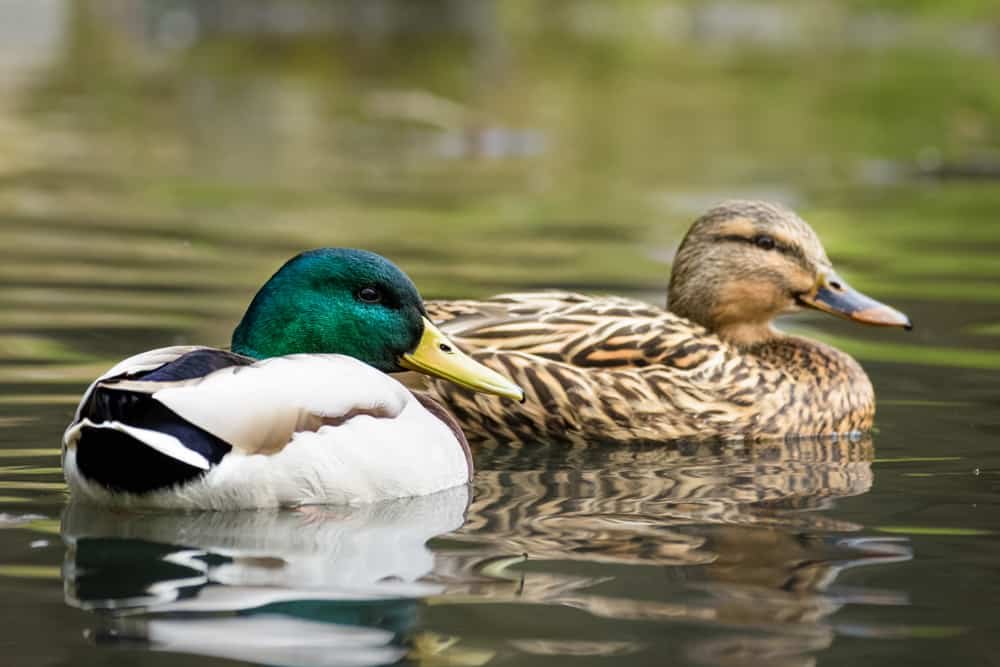
The Mallard, often considered the quintessential duck, is a familiar sight in ponds and wetlands worldwide. With their vibrant green heads, yellow bills, and chestnut-brown chests, these ducks possess an undeniable charm. Regarding physical characteristics, Mallards have a streamlined body shape with long necks and webbed feet perfect for swimming.
Males, also known as drakes, sport a distinctive curly black feather on their tails, while females, called hens or ducks, display more subdued brown plumage for camouflage during nesting. Regarding their habitat and behavior, Mallards are highly adaptable creatures.
They are found in lakes, rivers, marshes, and even urban areas with water bodies. These friendly birds form large flocks during migration or winter months but tend to pair up during the breeding season.
Pekin - The Domesticated Darling
The Pekin duck breed holds a special place in the hearts of many duck enthusiasts due to its adorable appearance and friendly demeanor.
Originating from China over 2,000 years ago, Pekins were initially bred as meat ducks but soon gained popularity worldwide as beloved pets too.
These domesticated darlings have become famous for their plump bodies characterized by white feathers that give them an angelic appeal.
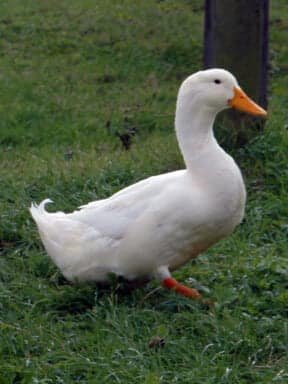
In terms of distinctive features and temperament, Pekins stand out with their round body shape perched atop short legs – almost resembling fluffy little balls waddling around! Known for being docile and calm in nature, they are often sought after as pets, especially for families with children.
Their calm temperament also makes them suitable for backyard farming. Pekins are excellent egg layers, producing large white eggs regularly.
Muscovy - The Unique Quacker
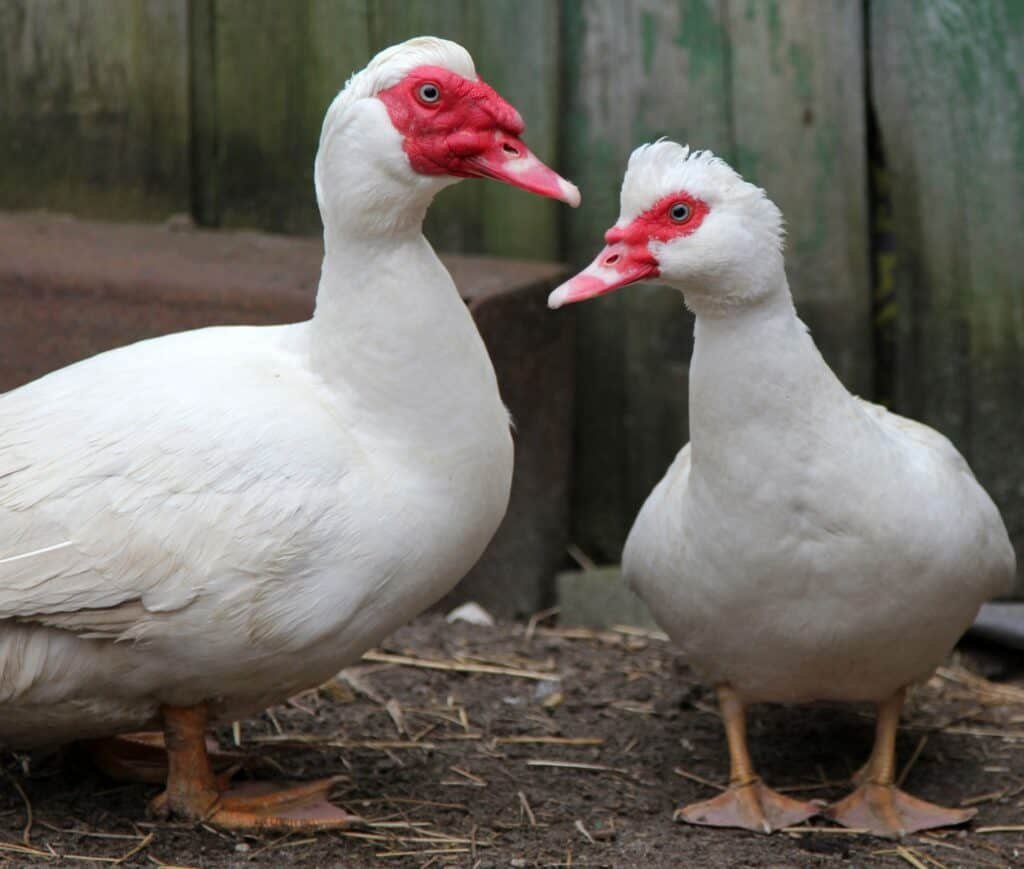
Moving away from the conventional waterfowl image, Muscovy ducks possess unique traits and appearances that set them apart from other duck breeds. Native to South America, these ducks were domesticated by indigenous people long before the arrival of Europeans in the region.
One can easily recognize a Muscovy by their striking facial features; a fleshy red or black knob on top of their bill and warty caruncles around their eyes. Muscovy ducks have an unusual quack-like call which some say sounds closer to a hiss than a typical quack.
They are known for being strong flyers due to having sharp claws on their feet used for perching in trees and roosting high off the ground at night—behavior uncommon among most duck breeds.
Another fascinating aspect about Muscovies is their strong sense of parenting; they show exceptional care towards their young ones and even display protective behavior towards hatchlings not related to them.
Rare and Exotic Duck Breeds
Indian Runner - The Upright Sprinter
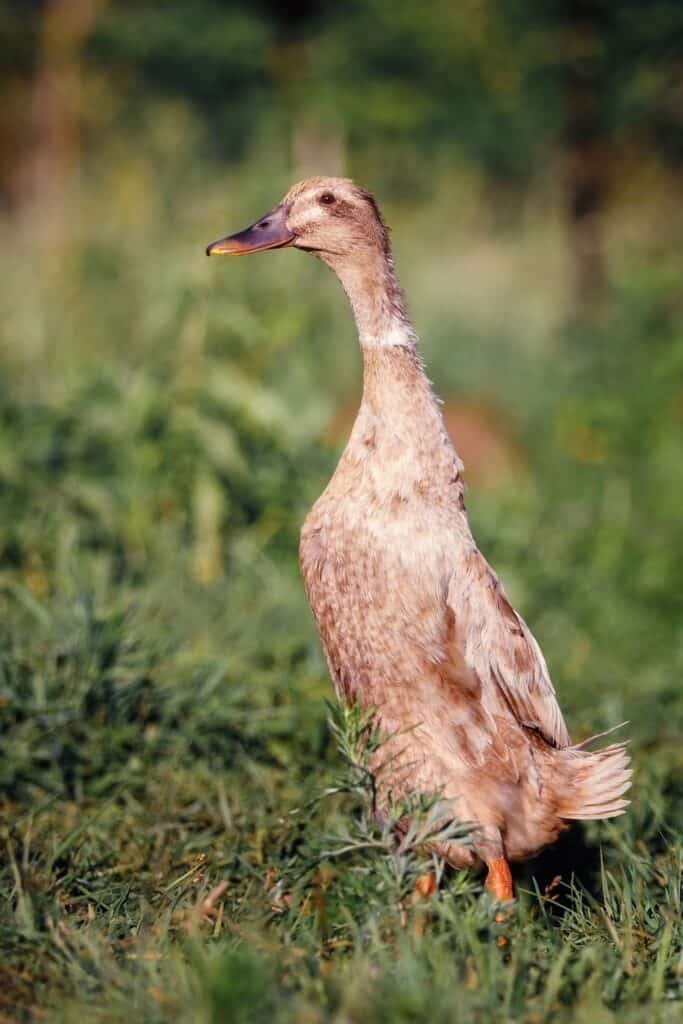
When it comes to unique duck breeds, the Indian Runner stands tall. Picture a duck with an incredibly straight posture that looks like it’s always in a hurry.
The Indian Runner’s distinctive body posture sets it apart from other breeds. With a slender frame and an upright stance, they resemble a sprinter ready to bolt from the starting line.
But what makes them truly fascinating is their peculiar gait. Instead of waddling like most ducks, Indian Runners move with swift, elongated strides reminiscent of their namesake.
This unusual walking style has earned them the nickname “Penguin Ducks.”
Besides being captivating to observe, Indian Runners are highly valued for their practical uses in farming. Their slender physique and agile movements make them excellent foragers, capable of efficiently navigating through crops and gardens while gobbling up pests like slugs and snails.
Cayuga - The Mysterious Beauty
If you’re looking for a breed that will leave you mesmerized by its enchanting appearance, look no further than the Cayuga duck. With its jet-black plumage shimmering with iridescent shades of green and purple under the sunlight, this breed exudes an aura of mystery and elegance.
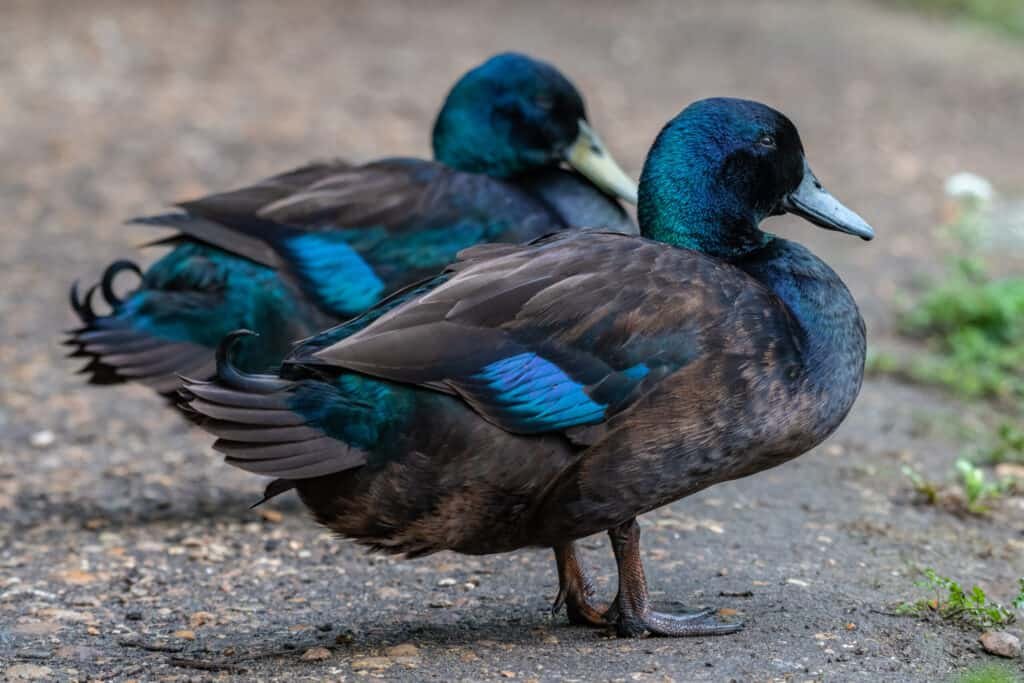
The Cayuga’s dark feathers are not only visually stunning but also serve practical purposes. These feathers help them blend seamlessly into their surroundings, acting as natural camouflage against predators in their native wetland habitats.
Beyond their striking aesthetics, Cayugas have an intriguing historical significance. Named after Cayuga Lake in New York where they were first bred by Native Americans centuries ago, these ducks have a rich heritage.
They were valued for their meat and eggs by early settlers and even became popular on menus in fine dining establishments during the 19th century. Today, the Cayuga’s allure persists as they continue to captivate duck enthusiasts with their striking looks and captivating history.
Ornamental Duck Breeds
When it comes to the realm of ornamental duck breeds, two captivating varieties stand out: Mandarin Ducks and Call Ducks.
Mandarin Ducks - Nature's Masterpiece
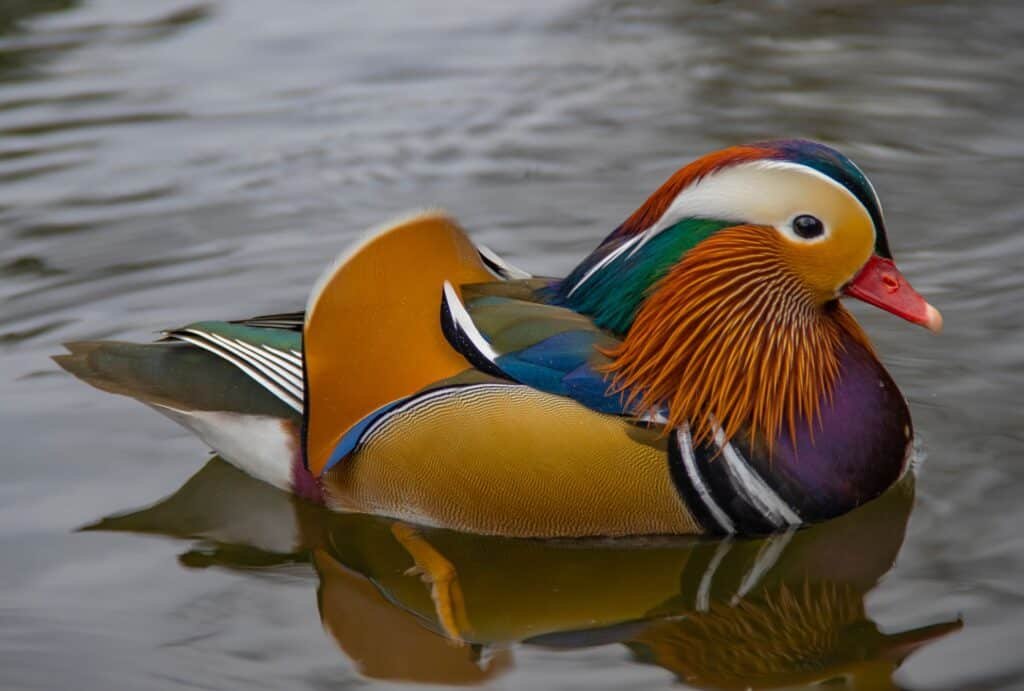
Mandarin ducks, also known as the “jewels of the pond,” are renowned for their stunning plumage. The males boast vibrant, kaleidoscopic colors with a mix of reds, purples, blues, and greens adorning their feathers. It’s as if nature itself played with an artist’s palette to create these exquisite creatures.
In contrast, the females exhibit more subtle yet equally elegant features with shades of brown and cream.
Beyond their enchanting appearance, Mandarin ducks hold great symbolism in various cultures. In Chinese folklore, they symbolize love and fidelity due to their lifelong pair bonding habits.
They are often seen as a representation of harmonious relationships and marital bliss. As such, they are frequently depicted in Asian art forms such as paintings or sculptures.
Call Ducks - Tiny but Mighty
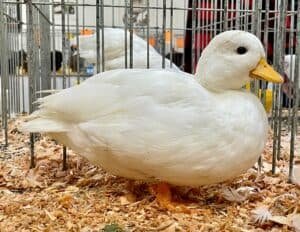
If you’re looking for an adorable feathered companion that packs a punch in personality despite its diminutive size, look no further than Call ducks. These dainty creatures are bred specifically for their pint-sized statuesque stature coupled with big personalities.
What Call ducks may lack in size—they typically weigh less than two pounds—they more than compensate for in charm and charisma. With their friendly nature and sociable behavior, they quickly become darlings among duck enthusiasts.
Their playful antics will keep you entertained for hours on end. One remarkable feature that sets Call ducks apart is their distinct whistling calls.
These melodious vocalizations have become synonymous with this breed and serve as a defining characteristic. Whether it’s a soft trill or a resounding honk, these unique calls contribute to the overall allure of Call ducks.
Lesser-Known Duck Breeds
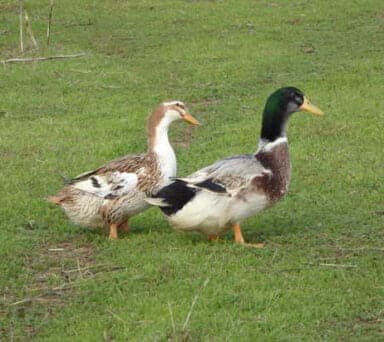
Appleyard Ducks – British Wonders
When it comes to lesser-known duck breeds, the Appleyard ducks certainly deserve mention. These delightful creatures originated in England and have gained popularity for their dual-purpose nature, excelling in meat and egg production. With their sturdy bodies, strong legs, and broad chests, Appleyard ducks are known for their robust frame that brings about tender and succulent meat.
Moreover, these ducks are highly productive layers, consistently providing a steady supply of large eggs with rich flavor. Sir Peter Scott is one notable figure associated with the conservation of Appleyard ducks.
This British naturalist and ornithologist was crucial in raising awareness about the breed’s decline in numbers during the 1960s. Recognizing their unique qualities as both farm animals and aesthetically pleasing creatures, Scott actively promoted the breeding and preservation of Appleyards through his conservation efforts.
Swedish Blue Ducks - Cold-Hardy Cuties
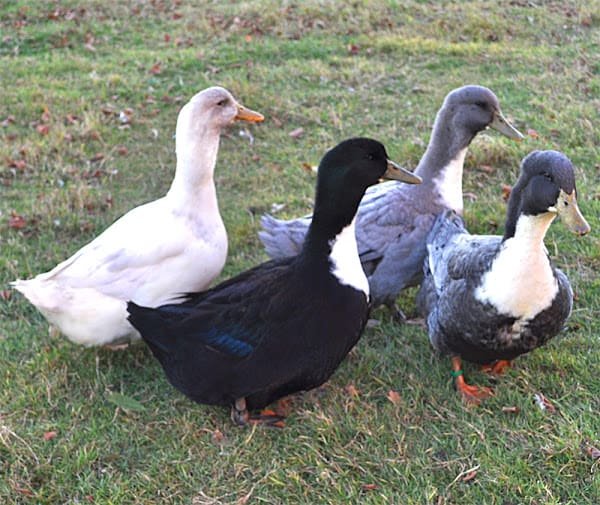
In the realm of cold-hardy duck breeds, Swedish Blue ducks reign supreme. Hailing from Sweden’s chilly climate, these adorable waterfowl have adapted exceptionally well to harsh winter conditions. Their dense plumage keeps them warm even when temperatures plummet to freezing levels.
Thanks to this adaptability, Swedish Blue ducks thrive in regions with frigid climates where other duck breeds might struggle. However, their usefulness doesn’t stop being resilient against winter’s bite — Swedish Blue ducks also play an important role in Swedish culinary traditions.
Known for their flavorful meat that boasts a delicate texture and mild taste profile, they are often featured in various traditional dishes throughout Sweden. From hearty stews to succulent roast dinners, these cold-hardy cuties add a touch of gastronomic delight to Swedish cuisine.
We can ensure their continued presence in our world by appreciating and promoting the unique qualities of lesser-known breeds like the Appleyard ducks and Swedish Blue ducks. These remarkable waterfowl bring diversity to our farms and contribute to cultural customs and conservation efforts that honor their origins.
Conclusion
Duck breeds truly offer a captivating slice of nature’s diversity. Each breed has unique charm and characteristics, from the classic Mallard to the exotic Muscovy. Whether you’re drawn to the ornamental beauty of Mandarin Ducks or fascinated by the unusual Indian Runner, a duck breed out there will capture your heart.
These remarkable creatures bring joy with their endearing quacks and waddles and serve essential purposes in various cultures and industries. From their role in agriculture as efficient pest controllers to their symbolic significance in ancient traditions, ducks have left an indelible mark on human history.
As we appreciate the beauty and diversity of duck breeds, let us also remember the efforts made by conservationists like Sir Peter Scott, who worked tirelessly to protect these magnificent creatures and their habitats. In a world that can often feel chaotic and overwhelming, observing these graceful waterfowl can remind us of the simple pleasures found in nature.
So next time you spot a duck gracefully gliding across a pond or hear its cheerful quack echoing through the air, take a moment to appreciate the wonders of our feathered friends. Harnessing grace, resilience, and adaptability, ducks inspire us to navigate life’s challenges with determination and optimism.
Let us find solace in their presence and strive towards creating a world where humans and ducks coexist harmoniously. Remember: Every journey begins with a single waddle! 365
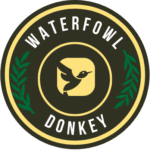
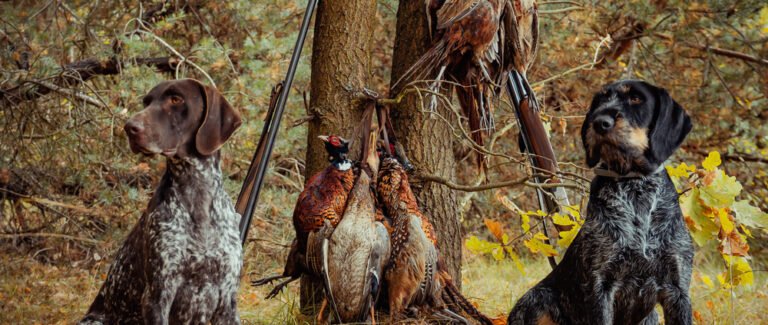


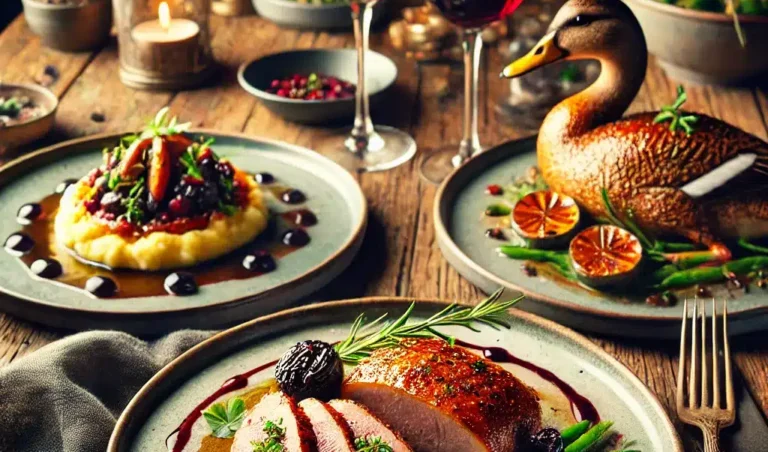


One other attention-grabbing characteristic of the Leapster system is that you may join it to a computer to download games, including starter games that teach shapes, numbers, colours, letters and reminiscence abilities.
I’d have to check with you here. Which isn’t something Which i do! I quite like reading a post that can make people believe. Also, thanks for allowing me to comment!
After exploring a number of the blog posts on your site, I truly like your technique of writing a blog. I saved it to my bookmark website list and will be checking back soon. Please check out my website too and let me know how you feel.
I couldn’t refrain from commenting. Well written.
I wanted to thank you for this excellent read!! I absolutely enjoyed every bit of it. I have got you bookmarked to look at new stuff you post…
An interesting discussion is worth comment. I think that you ought to write more about this issue, it might not be a taboo matter but typically people do not talk about such topics. To the next! Best wishes.
I want to to thank you for this good read!! I definitely loved every bit of it. I have got you book-marked to look at new stuff you post…
Hello there! I could have sworn I’ve been to this website before but after browsing through many of the posts I realized it’s new to me. Anyhow, I’m definitely delighted I discovered it and I’ll be book-marking it and checking back frequently!
Great post. I will be experiencing a few of these issues as well..
I must thank you for the efforts you’ve put in writing this site. I’m hoping to check out the same high-grade blog posts by you in the future as well. In truth, your creative writing abilities has encouraged me to get my very own site now 😉
There is definately a great deal to learn about this subject. I like all of the points you have made.
There is certainly a great deal to learn about this subject. I love all the points you have made.
Howdy! This post could not be written any better! Reading through this post reminds me of my previous roommate! He always kept talking about this. I will send this post to him. Fairly certain he’ll have a very good read. Thanks for sharing!
Horace Vernon Overington, BEM, Dean’s Virger, St.
Oh my goodness! Impressive article dude! Thanks, However I am having difficulties with your RSS. I don’t know why I cannot join it. Is there anybody else getting identical RSS problems? Anyone that knows the answer will you kindly respond? Thanx.
Greetings! Very helpful advice in this particular article! It is the little changes that produce the greatest changes. Thanks a lot for sharing!
It’s hard to find educated people in this particular subject, but you sound like you know what you’re talking about! Thanks
Spot on with this write-up, I really believe this website needs a great deal more attention. I’ll probably be back again to read more, thanks for the information.
I used to be able to find good advice from your articles.
Good information. Lucky me I ran across your site by chance (stumbleupon). I’ve saved it for later.
You made some decent points there. I checked on the web to learn more about the issue and found most people will go along with your views on this site.
Thank you for sharing excellent information. Your website is so cool. I am impressed by the info that you’ve on this website. It reveals how nicely you understand this subject. Bookmarked this website page, will come back for more articles.
Spot on with this write-up, I really think this website needs a great deal more attention. I’ll probably be back again to see more, thanks for the info.
After going over a handful of the blog articles on your web page, I seriously like your way of writing a blog. I saved as a favorite it to my bookmark site list and will be checking back soon. Take a look at my web site too and tell me your opinion.
Spot on with this write-up, I honestly believe that this website needs far more attention. I’ll probably be back again to read more, thanks for the advice.
I think one of your advertisings caused my browser to resize, you might want to put that on your blacklist.
Found your blog in the Yahoo screen printing directory, very nice job, thanks.
Good blog you’ve got here.. It’s difficult to find high-quality writing like yours nowadays. I honestly appreciate people like you! Take care!!
I was more than happy to discover this great site. I wanted to thank you for ones time just for this wonderful read!! I definitely liked every little bit of it and i also have you bookmarked to check out new information on your web site.
Hi there, just became aware of your blog through Google, and found that it’s truly informative. I’m going to watch out for brussels. I’ll be grateful if you continue this in future. Numerous people will be benefited from your writing. Cheers!
It addresses key points resembling decriminalization of suicide and recognition of LGBTQ rights in psychological well being care.
This is a topic that’s near to my heart… Many thanks! Where can I find the contact details for questions?
Spot on with this write-up, I seriously feel this site needs a lot more attention. I’ll probably be back again to read more, thanks for the information!
Oh my goodness! Impressive article dude! Thank you so much, However I am encountering issues with your RSS. I don’t know the reason why I can’t join it. Is there anybody getting identical RSS issues? Anyone that knows the solution can you kindly respond? Thanx!!
When I originally commented I clicked the -Notify me when new surveys are added- checkbox and after this whenever a comment is added I purchase four emails with the exact same comment. Could there be in whatever way you possibly can remove me from that service? Thanks!
Very good post. I am facing a few of these issues as well..
Can I simply just say what a comfort to find an individual who actually knows what they are talking about on the internet. You actually realize how to bring a problem to light and make it important. More people should look at this and understand this side of your story. I was surprised that you’re not more popular since you definitely possess the gift.
Saved as a favorite, I really like your blog.
Great blog you have here.. It’s difficult to find quality writing like yours nowadays. I honestly appreciate people like you! Take care!!
Adding to my bookmarks thanks, needed some more pictures maybe.
I would like to thank you for the efforts you have put in writing this site. I really hope to see the same high-grade content by you later on as well. In fact, your creative writing abilities has inspired me to get my very own website now 😉
I really like looking through a post that will make men and women think. Also, thanks for permitting me to comment.
Cash market mutual funds – short-time period funding debt, operated by skilled establishments.
You’ve made some decent points there. I looked on the internet for more information about the issue and found most individuals will go along with your views on this website.
I love it when folks get together and share views. Great website, continue the good work.
You ought to take part in a contest for one of the highest quality sites on the net. I will recommend this website!
I could not resist commenting. Well written!
I could not refrain from commenting. Well written.
Right here is the perfect blog for anyone who wants to find out about this topic. You understand a whole lot its almost hard to argue with you (not that I actually would want to…HaHa). You certainly put a fresh spin on a topic that has been written about for ages. Excellent stuff, just wonderful.
Not solely do power plants use steam to show turbines and produce electricity, but steam is also a very helpful cleansing software.
Hi there! This blog post could not be written much better! Looking through this article reminds me of my previous roommate! He continually kept talking about this. I am going to forward this post to him. Pretty sure he’s going to have a good read. I appreciate you for sharing!
Nice post. I learn something totally new and challenging on sites I stumbleupon everyday. It will always be helpful to read content from other writers and practice a little something from their sites.
Fairbairn’s thought of close fight was simple: No technique was out of bounds, and your sole objective was to kill your opponent as quickly as potential.
Very nice write-up. I definitely love this website. Stick with it!
Crown of Glass” a Shell Guide’s archive film”.
May I simply say what a comfort to uncover someone who really understands what they are discussing online. You actually know how to bring a problem to light and make it important. More and more people should check this out and understand this side of your story. It’s surprising you are not more popular because you certainly possess the gift.
Howdy! I could have sworn I’ve been to this website before but after looking at a few of the posts I realized it’s new to me. Anyhow, I’m definitely happy I discovered it and I’ll be bookmarking it and checking back regularly!
You have made some good points there. I checked on the net to find out more about the issue and found most individuals will go along with your views on this web site.
This web site certainly has all the information I wanted concerning this subject and didn’t know who to ask.
I absolutely love your blog.. Excellent colors & theme. Did you create this website yourself? Please reply back as I’m wanting to create my own website and would love to know where you got this from or just what the theme is named. Appreciate it.
I would like to thank you for the efforts you have put in writing this website. I’m hoping to see the same high-grade content by you later on as well. In truth, your creative writing abilities has inspired me to get my own site now 😉
You made some good points there. I looked on the internet for more info about the issue and found most individuals will go along with your views on this web site.
Having read this I believed it was rather informative. I appreciate you spending some time and effort to put this content together. I once again find myself personally spending a significant amount of time both reading and posting comments. But so what, it was still worth it!
Hey there! I simply wish to offer you a big thumbs up for your great information you have got right here on this post. I will be returning to your web site for more soon.
The next time I read a blog, Hopefully it won’t disappoint me just as much as this one. I mean, Yes, it was my choice to read, however I really believed you would probably have something useful to talk about. All I hear is a bunch of moaning about something you can fix if you were not too busy searching for attention.
Everything is very open with a clear explanation of the issues. It was definitely informative. Your website is useful. Thanks for sharing.
Good post. I learn something totally new and challenging on sites I stumbleupon on a daily basis. It will always be useful to read through articles from other writers and practice something from their sites.
Nice post. I learn something new and challenging on blogs I stumbleupon every day. It will always be interesting to read through articles from other authors and use a little something from their web sites.
Saved as a favorite, I love your site.
This is a topic which is close to my heart… Take care! Exactly where can I find the contact details for questions?
Great information. Lucky me I recently found your website by chance (stumbleupon). I have saved as a favorite for later.
I used to be able to find good information from your content.
Having read this I believed it was rather informative. I appreciate you spending some time and effort to put this information together. I once again find myself spending way too much time both reading and posting comments. But so what, it was still worth it.
Good post. I learn something new and challenging on sites I stumbleupon every day. It will always be exciting to read through content from other authors and use a little something from their sites.
Saved as a favorite, I love your web site!
Pretty! This has been a really wonderful post. Thank you for supplying this info.
Good post. I learn something totally new and challenging on websites I stumbleupon on a daily basis. It’s always interesting to read content from other writers and use a little something from their sites.
This web site truly has all of the information and facts I needed about this subject and didn’t know who to ask.
You should be a part of a contest for one of the best blogs on the internet. I most certainly will highly recommend this web site!
May I simply just say what a comfort to find someone who genuinely knows what they are discussing over the internet. You definitely know how to bring a problem to light and make it important. More and more people have to read this and understand this side of your story. I was surprised you’re not more popular since you surely have the gift.
Nevertheless, in contrast to several different books talked about or seen in Deus Ex, Jacob’s Shadow shouldn’t be a real book and Andrew Hammond isn’t an actual author.
I was able to find good information from your blog articles.
Brake rotors do a massive job for being such a small component of a vehicle.
There is definately a great deal to learn about this issue. I love all of the points you made.
An impressive share! I’ve just forwarded this onto a co-worker who was doing a little homework on this. And he actually ordered me lunch due to the fact that I found it for him… lol. So allow me to reword this…. Thank YOU for the meal!! But yeah, thanx for spending time to discuss this topic here on your site.
I used to be able to find good advice from your articles.
I needed to thank you for this wonderful read!! I absolutely loved every bit of it. I’ve got you book marked to check out new things you post…
I blog frequently and I really appreciate your information. This article has truly peaked my interest. I will book mark your blog and keep checking for new information about once a week. I opted in for your RSS feed as well.
The next time I read a blog, I hope that it does not disappoint me just as much as this one. After all, I know it was my choice to read, but I truly thought you’d have something useful to talk about. All I hear is a bunch of crying about something you can fix if you were not too busy searching for attention.
I love looking through a post that can make men and women think. Also, many thanks for allowing me to comment.
Howdy! This article couldn’t be written any better! Looking through this article reminds me of my previous roommate! He constantly kept talking about this. I’ll forward this information to him. Fairly certain he’s going to have a very good read. I appreciate you for sharing!
Hi, I do think this is a great website. I stumbledupon it 😉 I am going to come back yet again since I saved as a favorite it. Money and freedom is the best way to change, may you be rich and continue to help other people.
This site was… how do you say it? Relevant!! Finally I have found something which helped me. Kudos!
Your style is so unique in comparison to other people I have read stuff from. Thanks for posting when you’ve got the opportunity, Guess I’ll just bookmark this blog.
Great information. Lucky me I found your website by accident (stumbleupon). I have bookmarked it for later.
This is the right blog for anyone who wants to find out about this topic. You understand so much its almost hard to argue with you (not that I personally will need to…HaHa). You definitely put a new spin on a subject that has been written about for many years. Wonderful stuff, just great.
There’s definately a great deal to learn about this issue. I really like all the points you have made.
Spot on with this write-up, I absolutely feel this website needs a lot more attention. I’ll probably be back again to see more, thanks for the advice!
Spot on with this write-up, I really think this web site needs far more attention. I’ll probably be back again to see more, thanks for the info.
A fascinating discussion is definitely worth comment. There’s no doubt that that you ought to publish more about this topic, it may not be a taboo matter but usually people don’t discuss such subjects. To the next! Best wishes.
Great info. Lucky me I came across your website by accident (stumbleupon). I’ve book marked it for later.
I couldn’t resist commenting. Perfectly written.
I have to thank you for the efforts you have put in writing this website. I’m hoping to check out the same high-grade blog posts by you in the future as well. In truth, your creative writing abilities has inspired me to get my own, personal site now 😉
Their state licensing ensures that your bail Bondsman involvement is official and will be held accountable for any wrongdoing.
Hey there! I just wish to give you a big thumbs up for your excellent information you have here on this post. I am coming back to your site for more soon.
Very nice blog post. I absolutely appreciate this website. Stick with it!
Way cool! Some very valid points! I appreciate you penning this article and also the rest of the site is very good.
I’d like to thank you for the efforts you’ve put in penning this website. I am hoping to see the same high-grade content by you in the future as well. In fact, your creative writing abilities has motivated me to get my own, personal site now 😉
There are no intermediaries like brokers and aggregators so the expense ratio of the fund is lower.
May I simply say what a comfort to find someone that genuinely understands what they are talking about on the web. You certainly know how to bring a problem to light and make it important. A lot more people really need to look at this and understand this side of the story. I can’t believe you are not more popular given that you certainly have the gift.
It’s hard to come by knowledgeable people on this subject, however, you sound like you know what you’re talking about! Thanks
Having read this I believed it was very enlightening. I appreciate you spending some time and energy to put this article together. I once again find myself spending way too much time both reading and commenting. But so what, it was still worth it.
Saved as a favorite, I like your website.
Wonderful post! We are linking to this particularly great article on our site. Keep up the great writing.
This is a topic that is close to my heart… Best wishes! Exactly where are your contact details though?
Hello! I just would like to give you a big thumbs up for your excellent info you have right here on this post. I’ll be coming back to your web site for more soon.
We are so grateful for your encouragement—your loyalty lift our spirits every day.
You are so awesome! I don’t believe I’ve truly read through a single thing like this before. So nice to find another person with a few original thoughts on this issue. Seriously.. many thanks for starting this up. This web site is something that is needed on the web, someone with some originality.
I wanted to thank you for this wonderful read!! I certainly enjoyed every little bit of it. I have you book marked to check out new stuff you post…
I blog frequently and I genuinely thank you for your content. This article has really peaked my interest. I’m going to bookmark your site and keep checking for new details about once a week. I opted in for your RSS feed too.
We advise you to buy a firoza ratan at real value after checking proper certifications.
I couldn’t resist commenting. Well written.
After exploring a few of the blog articles on your website, I honestly like your technique of writing a blog. I bookmarked it to my bookmark webpage list and will be checking back soon. Take a look at my website too and let me know how you feel.
Way cool! Some extremely valid points! I appreciate you writing this write-up and the rest of the site is really good.
An impressive share! I’ve just forwarded this onto a friend who was doing a little research on this. And he in fact bought me breakfast because I discovered it for him… lol. So allow me to reword this…. Thank YOU for the meal!! But yeah, thanks for spending time to talk about this subject here on your internet site.
You are so interesting! I do not believe I’ve read something like this before. So good to discover someone with some original thoughts on this subject. Really.. thank you for starting this up. This web site is something that is needed on the web, someone with a little originality.
Everything is very open with a clear description of the challenges. It was truly informative. Your website is very useful. Many thanks for sharing!
If you’re looking to download MetaMask Wallet for Safari or Opera, https://metalead.org/ is the perfect site! It made my MetaMask Login setup super easy and hassle-free.
Everything is very open with a very clear description of the challenges. It was really informative. Your site is extremely helpful. Thanks for sharing.
Hello! I could have sworn I’ve visited this website before but after browsing through a few of the posts I realized it’s new to me. Anyways, I’m definitely pleased I stumbled upon it and I’ll be bookmarking it and checking back often!
Your style is so unique compared to other people I’ve read stuff from. Thanks for posting when you’ve got the opportunity, Guess I will just book mark this web site.
A fascinating discussion is definitely worth comment. I think that you need to write more on this subject, it may not be a taboo subject but typically people do not talk about such issues. To the next! Cheers!
An interesting discussion is definitely worth comment. I do believe that you ought to publish more about this topic, it may not be a taboo matter but usually people don’t talk about these subjects. To the next! Many thanks.
Aw, this was an incredibly nice post. Spending some time and actual effort to generate a really good article… but what can I say… I hesitate a lot and don’t manage to get anything done.
Funeral companies for Jerry HAVLOVIC, 86, who died in Redding, Calif.
An impressive share! I have just forwarded this onto a friend who has been conducting a little homework on this. And he in fact ordered me dinner because I discovered it for him… lol. So allow me to reword this…. Thank YOU for the meal!! But yeah, thanks for spending some time to discuss this subject here on your website.
Hello there! This post couldn’t be written much better! Looking at this article reminds me of my previous roommate! He always kept preaching about this. I most certainly will send this post to him. Pretty sure he’s going to have a great read. I appreciate you for sharing!
Having read this I believed it was very enlightening. I appreciate you taking the time and effort to put this content together. I once again find myself spending a significant amount of time both reading and leaving comments. But so what, it was still worthwhile!
As a consequence, the fluctuations in the prices of the shares are harnessed to earn earnings from the buying and selling of shares.
An outstanding share! I’ve just forwarded this onto a co-worker who was doing a little research on this. And he in fact bought me lunch simply because I found it for him… lol. So allow me to reword this…. Thank YOU for the meal!! But yeah, thanx for spending the time to discuss this topic here on your web site.
This is a topic which is near to my heart… Cheers! Where are your contact details though?
Good day! I just want to give you a huge thumbs up for your great information you’ve got here on this post. I am coming back to your blog for more soon.
Introducing to you the most prestigious online entertainment address today. Visit now to experience now!
I have to thank you for the efforts you have put in penning this blog. I’m hoping to view the same high-grade content from you in the future as well. In fact, your creative writing abilities has encouraged me to get my very own blog now 😉
Having read this I believed it was really enlightening. I appreciate you finding the time and effort to put this short article together. I once again find myself personally spending way too much time both reading and posting comments. But so what, it was still worthwhile.
This is a topic that’s close to my heart… Take care! Exactly where can I find the contact details for questions?
sex nhật hiếp dâm trẻ em ấu dâm buôn bán vũ khí ma túy bán súng sextoy chơi đĩ sex bạo lực sex học đường tội phạm tình dục chơi les đĩ đực người mẫu bán dâm
MetaMask Download was a breeze! Setting it up on Safari and Opera was equally simple. If you’re starting out, https://metanaito.net/ is a great resource.
An interesting discussion is definitely worth comment. I do believe that you should write more on this subject, it may not be a taboo subject but typically people do not talk about these subjects. To the next! Many thanks!
Beginning in 2011 the RBI required 25 of new branches opened in a given year be in unbanked rural areas centers to ensure a more even spread of banking facilities.
sex nhật hiếp dâm trẻ em ấu dâm buôn bán vũ khí ma túy bán súng sextoy chơi đĩ sex bạo lực sex học đường tội phạm tình dục chơi les đĩ đực người mẫu bán dâm
I was extremely pleased to find this website. I need to to thank you for ones time for this particularly fantastic read!! I definitely appreciated every part of it and I have you book-marked to see new information in your blog.
sex nhật hiếp dâm trẻ em ấu dâm buôn bán vũ khí ma túy bán súng sextoy chơi đĩ sex bạo lực sex học đường tội phạm tình dục chơi les đĩ đực người mẫu bán dâm
Very good write-up. I certainly appreciate this site. Keep it up!
Orientation contains an object’s yaw, pitch and roll.
After I initially commented I seem to have clicked on the -Notify me when new comments are added- checkbox and from now on every time a comment is added I get four emails with the same comment. Is there a means you are able to remove me from that service? Thank you.
Introducing to you the most prestigious online entertainment address today. Visit now to experience now!
I used to be able to find good information from your blog articles.
I truly love your blog.. Pleasant colors & theme. Did you develop this amazing site yourself? Please reply back as I’m attempting to create my own site and would like to find out where you got this from or just what the theme is named. Cheers.
sex nhật hiếp dâm trẻ em ấu dâm buôn bán vũ khí ma túy bán súng sextoy chơi đĩ sex bạo lực sex học đường tội phạm tình dục chơi les đĩ đực người mẫu bán dâm
The range of venture capital funding is larger than the one of angel investors.
You do have to steadiness it, though.
Everything is very open with a clear explanation of the issues. It was definitely informative. Your site is very useful. Thank you for sharing!
Other than assessing his skills and perspective in direction of clients, you also want to guage whether or not he has the best infrastructure set up.
You are so interesting! I do not think I’ve read through anything like that before. So nice to discover somebody with genuine thoughts on this subject. Seriously.. many thanks for starting this up. This site is one thing that’s needed on the web, someone with some originality.
Hi, I do believe this is a great site. I stumbledupon it 😉 I will return yet again since I bookmarked it. Money and freedom is the greatest way to change, may you be rich and continue to guide other people.
If you are looking for investment that you can keep for a while without having to monitor it, then gold is definitely the investment for you.
It’s difficult to find well-informed people for this topic, however, you sound like you know what you’re talking about! Thanks
The tax is imposed on other transfers of property made as an incident of the dying of the proprietor, comparable to a transfer of property from an intestate estate or belief, or the fee of certain life insurance coverage benefits or financial account sums to beneficiaries.
The mental property rights are owned by Vertigo Records.
I’m amazed, I must say. Rarely do I come across a blog that’s equally educative and engaging, and without a doubt, you have hit the nail on the head. The problem is something which too few folks are speaking intelligently about. I am very happy I came across this during my search for something relating to this.
Good post. I definitely appreciate this website. Keep it up!
Game 9 was a 39-transfer win for Carlsen.
Very good post. I’m facing many of these issues as well..
I would like to thank you for the efforts you have put in penning this blog. I am hoping to see the same high-grade content from you later on as well. In truth, your creative writing abilities has motivated me to get my own blog now 😉
After ensuring that your web site is well ranked, make an evaluation of its operation.
An outstanding share! I have just forwarded this onto a co-worker who has been doing a little research on this. And he in fact bought me dinner because I discovered it for him… lol. So let me reword this…. Thank YOU for the meal!! But yeah, thanx for spending time to discuss this matter here on your internet site.
Secure your cryptocurrency by setting up your MetaMask Wallet today. For helpful tips, visit https://kingroada.com/.
In its opening season, Monte Carlos outsold Thunderbirds by a mile.
Good post. I learn something totally new and challenging on sites I stumbleupon on a daily basis. It will always be useful to read articles from other writers and practice a little something from other web sites.
There’s simply no means your child or little one can open this merchandise.
It subsequently emerged that ESPN officials had greenlit the broadcast regardless of Bishop Sycamore being sluggish to offer rudimentary details about the school and the crew, opposite to longstanding practice for top faculties appearing on the network.
Way cool! Some extremely valid points! I appreciate you penning this post and also the rest of the site is also very good.
How a lot of an professional on American automobiles in films are you?
The Commission will not be granted any veto right over the national parliaments potential pass of a fiscal budget, but will have the role to issue warnings in advance to the national parliaments, if the proposed draft budget is found to compromise the debt and deficit rules of the SGP.
Good day! I could have sworn I’ve been to this blog before but after looking at a few of the posts I realized it’s new to me. Anyways, I’m certainly delighted I found it and I’ll be book-marking it and checking back frequently.
Unlike regular bugs, regressions are significantly nasty, since they had been purported to have been fixed already.
It’s difficult to find educated people for this subject, but you seem like you know what you’re talking about! Thanks
Hi, I would like to subscribe for this web site to take
most up-to-date updates, thus where can i do it please help out.
The fantastic story of Lem Putt, country carpenter and specialist builder of privies.
I like it when individuals get together and share thoughts. Great website, stick with it!
Another problem of notion is the widespread assumption that the mere presence of a safety system (corresponding to armed forces or antivirus software) implies security.
198. Two mates are seen in the newest French fashions – one in a ruby pink dress; the opposite in a darkish green dress with black lace trim.
Good post. I learn something totally new and challenging on sites I stumbleupon every day. It’s always interesting to read content from other writers and use something from their web sites.
They leave nothing to chance and are forever trying to “manage” those they love.
There’s certainly a great deal to learn about this subject. I love all of the points you made.
Using Metamask on Chrome has been a great experience! If you’re looking for step-by-step instructions, https://metamenu.org/ has you covered.
Hermione makes use of a Time-Turner to take additional lessons.
Great post. I’m experiencing many of these issues as well..
HDBET là nhà cái cá cược trực tuyến hàng đầu tại Việt Nam, cung cấp đa dạng các trò chơi từ cá cược thể thao đến casino trực tuyến.
In its reversed position, the Page of Swords suggests that you may have your head in the clouds, meaning that you may be disconnected from reality or lacking focus.
A fascinating discussion is definitely worth comment. I do believe that you should publish more about this subject matter, it might not be a taboo subject but generally people do not talk about such subjects. To the next! Kind regards!
I blog often and I seriously appreciate your content. The article has really peaked my interest. I am going to bookmark your site and keep checking for new details about once per week. I subscribed to your Feed too.
This website truly has all of the information and facts I wanted concerning this subject and didn’t know who to ask.
Putting someone in a circle does not imply they’re going to observe you again — a circle can be a one-way relationship.
I’m pretty pleased to find this great site. I need to to thank you for your time for this particularly wonderful read!! I definitely savored every bit of it and i also have you book marked to check out new things on your blog.
The most you should reasonably be expected to pay is about $200 in documentation fees.
Travel administration companies have workers specifically skilled in different areas to make sure you get a private journey and the most effective prices for every space.
This is the right site for anybody who wishes to understand this topic. You realize a whole lot its almost tough to argue with you (not that I actually would want to…HaHa). You certainly put a fresh spin on a topic that has been discussed for ages. Excellent stuff, just excellent.
You should take part in a contest for one of the highest quality websites on the web. I will highly recommend this website!
When you need Model technique and activation Myanmar companies, then without hesitation contact them.
Right here is the right site for anybody who hopes to find out about this topic. You realize a whole lot its almost tough to argue with you (not that I personally would want to…HaHa). You definitely put a brand new spin on a subject which has been discussed for decades. Excellent stuff, just excellent.